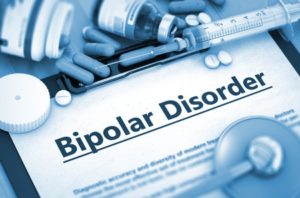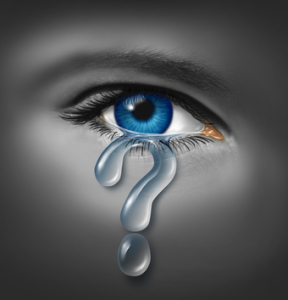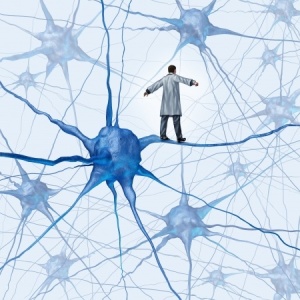Huffing and Puffing at Anti-Psychiatry
For awhile now I’ve been aware of the ongoing dispute between mainline psychiatry and what is disparagingly referred to as the “anti-psychiatry” movement instead of the critical psychiatry movement. Over time I have come to identify with the “anti-psychiatric” types. The term sets up a false dichotomy, implying you can only be “for” or “against” psychiatry. Critiques of psychiatric diagnosis or the use of psychiatric medications are regularly dismissed out-of-hand by mainline psychiatry. One of the ongoing dialogues of dispute occurs between the author and journalist Robert Whitaker and the eminent psychiatrist Ronald Pies.
Robert Whitaker is the author of three books that relentlessly drive their readers to question the narrative for mental illness and psychiatry verbalized by mainline psychiatrists like Ronald Pies. These books are: Mad in America, Anatomy of an Epidemic and Psychiatry Under the Influence. His articles on the mentally ill and the drug industry have won several awards. A series he wrote for The Boston Globe was a finalist for the Pulitzer in 1998. Anatomy was the 2010 winner for best investigative journalism by Investigative Reporters and Editors, Inc. Mad in America is also the name of a nonprofit organization and webzine, madinamerica.com, whose mission is “to serve as a catalyst for rethinking psychiatric care in the United States (and abroad).”
Ronald Pies is a noted psychiatrist, a Clinical Professor of Psychiatry at Tufts University and SUNY Upstate Medical University, Syracuse NY. He is also Editor in Chief Emeritus of Psychiatric Times. A bit of a Renaissance man, he’s published poetry: The Heart Broken Open, a novel: The Director of the Minor Tragedies, nonfiction: Becoming a Mensch: Timeless Talmudic Ethics for Everyone, as well as psychiatry: Psychiatry on the Edge, Handbook of Essential Psychopharmacology and psychotherapy: The Judaic Foundations of Cognitive-Behavioral Therapy. He has authored or coauthored several other books as well.
Whitaker and Mad in America authors have disagreed with Pies on several issues. For example, they disagreed on whether psychiatrists widely promoted the chemical imbalance theory (see “Psychiatry DID Promote the Chemical Imbalance Theory” and “My Response to Dr. Pies” on madinamerica.com); or whether the long-term use of antipsychotics is helpful (see “Dr. Pies and Dr. Frances Make a Compelling Case that Their Profession is Doing Great Harm on madinamerica.com).
Into this mix Pies has written three articles for Psychiatric Times: “Is There Really an ‘Epidemic’ of Psychiatric Illness in the US?,” “The Bogus ‘Epidemic’ of Mental Illness in the US” and “The Astonishing Non-Epidemic of Mental Illness.” He’s clearly playing off of Whitaker’s book: Anatomy of an Epidemic. In his third article, “The Astonishing Non-Epidemic of Mental Illness,” Pies said that the epidemic of mental illness narrative is (with a few qualifications) “mostly fear-mongering drivel.” It sells books and makes for good online chatter, but “The so-called epidemic of mental illness among adults in the US proves largely illusory.”
He did some rhetorical sleight-of-hand, stating that by pulling out the bottom card of the epidemic narrative, the entire house of cards of the anti-psychiatry movement would collapse. In order to do this, he first quoted what he said was the CDC definition of epidemic: “ . . . an increase, often sudden, in the number of cases of a disease above what is normally expected in that population in that area . . .” Pies then said the CDC definition of epidemic applied to actual cases of disease; not to changing rates of diagnosis, which are subject to many socio-cultural variables. The distinction was critical,
Since psychiatry’s critics do not claim merely that there is more diagnosis of schizophrenia or major depression; rather, they claim there are actually more people sick with these illnesses, owing to misguided or harmful psychiatric treatment.
Remember that in psychiatric diagnosis, there are relatively few diagnoses that can be confirmed by medical tests. The vast majority of psychiatric disorders are assessed by a diagnostic process alone. If you demonstrate to a clinician that you meet the diagnostic criteria for a psychiatric disorder, you are treated as if you actually have the disorder. So Pies seems to be splitting hairs with his distinction between actual cases and diagnoses. And I don’t think he has made as telling a point as he thought.
It would seem he is suggesting that psychiatric diagnostic rates for a disorder are overstated from the actual cases because of the influence of socio-cultural variables. Yet how can you distinguish the actual cases from the false positives due to socio-culturally influenced diagnosis? The same diagnostic criteria are used. Is there an unstated assumption that diagnostic inflation is due to factors beyond psychiatry? Namely, that if a trained psychiatrist follows the structured clinical interview process, only actual cases of a psychiatric disorder will be identified?
Pies also said the “epidemic” claim was largely based on the increasing US rates of psychiatric disability over the past 50 years. Here he cited an article by Whitaker without mentioning Whitaker’s name. He dismissed the validity of using disability determinations, saying they cannot be used as “a legitimate index of disease incidence or prevalence.” He then shifts the focus to affirm there is a growing population of “persons with serious psychiatric illness who are not receiving adequate treatment.” Here he named two well-known psychiatrists who have written of their concerns with the “epidemic” of neglect with our most severely impaired citizens. But one of the persons he mentioned, Dr. Fuller Torrey, wrote The Invisible Plague about the rise of mental illness from 1750 to the present!
In the Introduction to The Invisible Plague Torrey described what he saw as “the epidemic of insanity.” He said a major impediment to understanding the epidemic of insanity was that its onset occurred over so many years. Few people fully appreciated what was happening. “Those who did raise an alarm were largely ignored.” He said the suggestion today that we are living in the midst of an epidemic of insanity strikes most people as unbelievable.
Insanity is an invisible plague. There are no body counts with which one can compare the present with the past. In most countries, there are remarkably few statistics that can be used to assess insanity’s prevalence over time. Professional textbooks assume that insanity has always been present in approximately the same numbers as now.
Fuller Torrey is a believer in insanity as an epidemic of brain dysfunction. And he blames the likes of Michel Foucault, Thomas Szasz, Ronald Laing and others for emptying the insane asylums that have been “the mainstay for containing the epidemic for a century and a half,” without insuring these individuals received the treatment needed to control the symptoms of their illness.
When looking at the costs of this epidemic, Torrey said the combined costs in 1991 for the US were $110 billion. “And this included the single largest disease category for federal payments under the Supplemental Security Income (SSI) and Social Security Disability Insurance (SSDI) programs.” So in quantifying the cost of the epidemic of insanity, Torrey used the same statistic to make his point that Whitaker did. Pies either didn’t realize this, or ignored it in his critique of Whitaker. I wonder if Pies sees what Torrey said as fear-mongering drivel or one of the few qualifications?
Pies dismissively cited two articles written by Marcia Angell for The New York Review of Books in 2011 (“The Epidemic of Mental Illness: Why?” and “The Illusions of Psychiatry”) in all three of his articles as an example of the promotion of the false narrative of “the raging epidemic of mental illness.” Her articles discussed three books and their implications for psychiatry: The Emperor’s New Drugs, Anatomy of an Epidemic, and Unhinged: The Trouble with Psychiatry. Angell’s review of Whitaker’s book drew it to the attention of a wide audience; so it seems this may be at least partly why Pies is dismissive of it.
However, read her articles. They will give you a thumbnail sketch of issues Pies goes to great lengths to deny and minimize. Then read the books she discusses. Remember that Marcia Angell is a Senior Lecturer at Harvard Medical School and was the first woman to serve as editor-in-chief of the New England Journal of Medicine. Don’t be dismissive of what she has to say; she has great credibility.
There is one final point to be made with regard to Pies’ third article. In the conclusion, he references Thomas Kuhn’s idea of “paradigm,” saying it is misleading and unfair to suggest that psychiatry is laboring under a “failed paradigm.” This was, he said, because “there is no one paradigm the defines all of psychiatry or that dictates practice on the part of all psychiatrists.” But I wonder if he truly understood the implications to his comment. If you apply Kuhn’s notion of paradigm (“a paradigm is what members of a scientific community share”) with Pies’ application of the term to psychiatry, then you would have to conclude that psychiatry as it’s practiced, is NOT a science. Rather, it would either be what Kuhn called a “pseudoscience” or pre-scientific. He also seems to be oblivious to the possibility of an implicit paradigm generated in psychiatric practice with DSM diagnosis—that it classifies a real “illness” or “disease” of the brain.
I’m reminded of what Robert Whitaker pointed out in his review of Jeffrey Lieberman’s book Shrinks, “The Untold Story of Psychiatry.” Whitaker noted how speeches given by the presidents of the American Psychiatric Association at their annual meetings regularly sounded the same theme: “Psychiatrists are true heroes.” He said it struck him that Shrinks served as an institutional self-portrait of psychiatry. “What you hear in this book [Shrinks] is the story that the APA and its leaders have been telling to themselves for some time.” Similarly, it seems Pies is preaching to the psychiatric choir—a message that there really isn’t an epidemic increase in mental illness; the argument that the anti-psychiatry movement is just a house of cards. Yet it seems to me that house is still standing despite the huffing and puffing of Pies and others.








